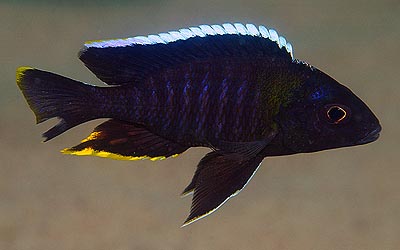| Protecting Malawi cichlidsby
Ad Konings / continued part 2—
The same is true for the Zambian section of Lake Tanganyika where beach seines are banned as well but the sand-dwelling cichlids of the shallow inshore waters never returned. In Lake Malawi I remember witnessing seines tied between two large diesel boats being dragged over long sandy stretches swiping several Lethrinops species into oblivion. Most of those operations have since long ceased because the fish are gone, but in the Salima Area seining is still very prevalent, with nets and ropes being laid 2 km into the lake. Unfortunately the area affected, the southwestern corner of the lake near Chipoka, is a major breeding area for chambo (Oreochromis spp. —tilapias) one of the main food fishes of Lake Malawi. These seine nets are employed during the breeding season of these fishes as they return to the area every year. Legislation is in place that prohibits fishing during the breeding period (Nov / Dec), but the controlling government body (Fisheries) does not have the means to enforce it. |
 In
1980 the rocky shorelines and the islands around the Nankumba Peninsula
in the southern part of the lake were declared National Park and in 1983
the park was elevated to a World Heritage Site. The park, the major part
of which includes the forest reserve on Nankumba Peninsula, embraces lake
waters that lie within 100 meters of the park’s terrestrial sections. Almost
all shorelines within the park’s boundaries are rocky and the purpose of
this arrangement is to include and protect as wide a variety as possible
of cichlids, many of which are restricted to particular rocky shores. In
1980 the rocky shorelines and the islands around the Nankumba Peninsula
in the southern part of the lake were declared National Park and in 1983
the park was elevated to a World Heritage Site. The park, the major part
of which includes the forest reserve on Nankumba Peninsula, embraces lake
waters that lie within 100 meters of the park’s terrestrial sections. Almost
all shorelines within the park’s boundaries are rocky and the purpose of
this arrangement is to include and protect as wide a variety as possible
of cichlids, many of which are restricted to particular rocky shores. |
